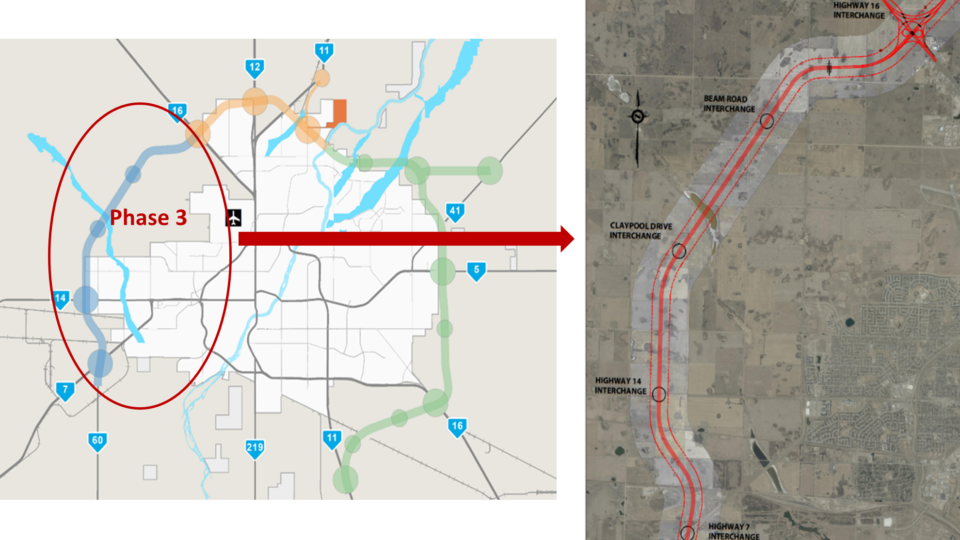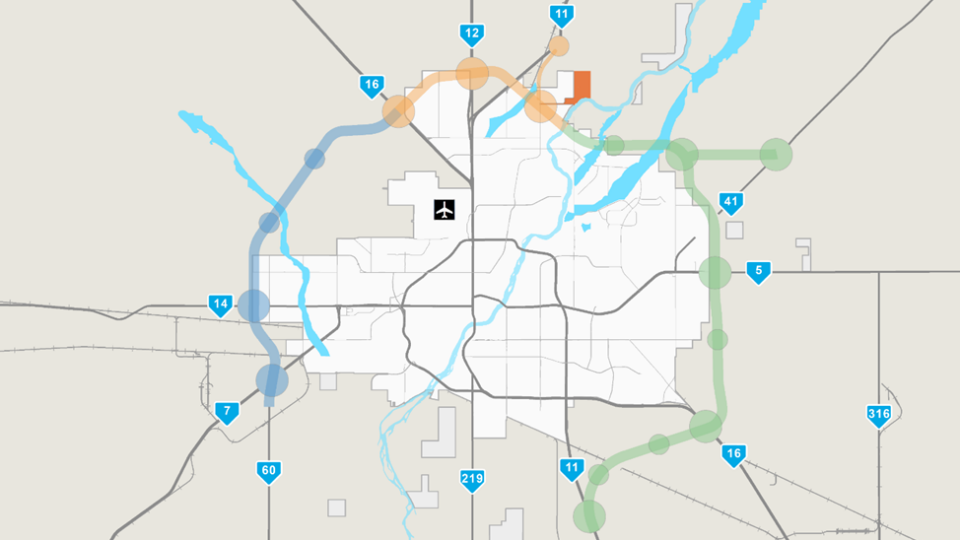Main Content
Saskatoon Freeway Project
Functional Planning Study – Phase 3 has begun
The Government of Saskatchewan, through the Ministry of Highways, is in the midst of a multi-year functional planning study which will determine how the Saskatoon Freeway will look and operate. This freeway is expected to be a minimum four-lane, 55-kilometre stretch of divided highway that begins at Highway 11 south of Saskatoon and connects with Highway 7 west of the city.
The functional planning study’s scope includes determining the placement of 17 interchanges, five railway overpasses, several flyovers and one major river crossing.
Work on the functional planning study is expected to be completed in 2024. Currently, there is no timetable for a final decision regarding the freeway’s construction.
Phase 1 of the functional planning study is now complete; click here to read a summary.
Phase 2 of the functional planning study is now complete; click here to read a summary.
Phase 3 of the functional planning study is now underway; click here to read an overview.
What’s New
Third phase of functional planning study underway
Nov. 2, 2023The Ministry of Highways has started the third and final phase of the Saskatoon Freeway Functional Planning Study (SFFPS) which includes the western section of the Saskatoon Freeway between Highway 16 west and the Highway 7/Highway 60 intersection.
What is a functional planning study?
Typically, any large-scale road planning project begins with a general location study which determines a corridor for construction. For the Saskatoon Freeway, the general location study was completed in 2018 and the corridor for the Saskatoon Freeway was endorsed by the City of Saskatoon and the Rural Municipality of Corman Park.
A functional study is the next step and focuses on finalizing additional concept design, including setting the centre line of the freeway and defining types of interchanges and service roads needed to get on and off the freeway. When the preferred route is approved, the current 500-metre-wide corridor will be reduced by approximately 75 per cent. Restrictions on development will be limited to a much smaller area of land.
Partners
The functional planning study is being led by Saskatchewan’s Ministry of Highways, the City of Saskatoon and the Rural Municipality of Corman Park, with support from AtkinsRéalis (formerly SNC Lavalin), AECOM and Praxis Consulting.
Project leads



Project consultants






